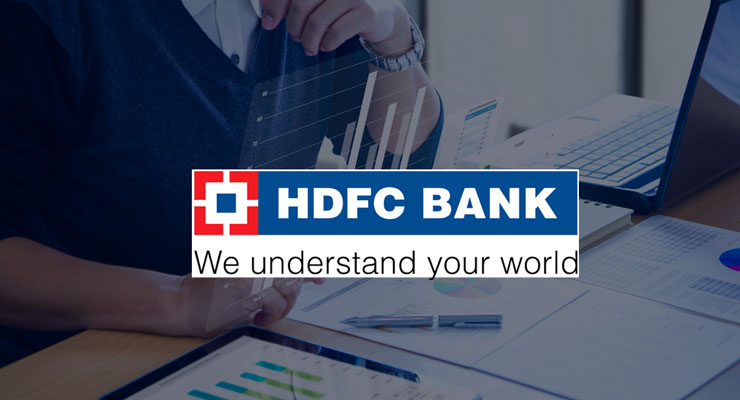Introduction
HDFC Bank: Welcome to the comprehensive overview of HDFC Bank’s fundamental analysis! HDFC Bank is the largest private-sector bank in India with over 100 million customers, and its shares are highly sought after in the stock market. This blog aims to provide an educational and descriptive insight into how HDFC Bank consistently maintains its position as the leader in the banking industry. With this blog, we aim to give you the tools to make informed investment decisions for your portfolio. So come on, let’s dive into the world of HDFC Bank’s fundamental analysis!
Overview of HDFC Bank
Introduction: Investing in the stock market can be a tricky affair, especially if you do not have a fundamental understanding of the company you are investing in. HDFC Bank, being one of the leading banks in India, is a significant investment for many people. In this blog, we will dive deep into the fundamental analysis of HDFC Bank, starting with an overview of the bank. Overview of HDFC Bank: HDFC Bank, established in 1994, is a leading private sector bank in India.
The bank has a vast network of over 5,485 branches and 14,533 ATMs spread across 2,866 cities in India. With over 1,42,000 employees, HDFC Bank is the largest private sector employer in the country. History: HDFC Bank was incorporated in August 1994 and started its operations as a scheduled commercial bank in January 1995. Since then, the bank has grown significantly, becoming one of the top banks in India.
HDFC Bank’s ability to adapt to change and innovate continuously has been a key factor in its success. Business Model: HDFC Bank’s business model primarily focuses on retail banking, wholesale banking, and other banking services. The bank has a robust digital platform, which has been a significant contributor to its growth. HDFC Bank’s strong distribution network, coupled with its digital platform, has enabled it to cater to a wide range of customers.
Shareholding Pattern: HDFC Bank’s shareholding pattern is quite unique, with HDFC Ltd being the promoter and holding close to 25% of the shares. Other prominent shareholders include foreign institutional investors (FIIs), domestic institutional investors (DIIs), and retail investors. In conclusion, HDFC Bank’s extensive network, innovative business model, and unique shareholding pattern make it a significant player in the Indian banking industry. In the following sections, we will dig deeper into the fundamental analysis of HDFC Bank, covering key financial ratios, SWOT analysis, and the bank’s future outlook.
Fundamental Analysis
What is fundamental analysis, you ask? It’s the practice of evaluating a company based on its financial and economic fundamentals, such as financial statements, industry trends, management quality, and overall economic indicators. For HDFC Bank, this means taking into account its financial health, market position, and future growth prospects. So why is fundamental analysis important specifically for HDFC Bank? Well, for one, HDFC Bank’s industry – the banking sector – is highly regulated and subject to various external factors such as interest rates, inflation, and government policy.
A thorough analysis of the bank’s financials and position in the market is crucial to understanding how HDFC Bank will fare in this ever-changing landscape. When conducting fundamental analysis of HDFC Bank, there are several financial ratios to look out for. These ratios can help evaluate the bank’s profitability, liquidity, and debt levels. For example, the price-to-earnings (P/E) ratio compares the bank’s share price to its earnings per share, indicating whether the stock is overvalued or undervalued.
Similarly, the return on assets (ROA) and return on equity (ROE) ratios measure the bank’s profitability relative to its total assets and shareholder equity, respectively. Overall, fundamental analysis is a key tool in evaluating HDFC Bank’s financial health and market position. By considering a range of indicators such as financial ratios and broader economic trends, investors and analysts can gain a well-rounded view of HDFC Bank’s prospects for growth and success in the years to come.
SWOT Analysis
When conducting a SWOT analysis of HDFC Bank, it is important to identify its strengths, weaknesses, opportunities, and threats. Starting with the strengths, HDFC Bank has established itself as one of the leading banks in India and has a strong customer base. Its superior customer service, innovative products, and state-of-the-art technology have given it an edge over its competitors. Additionally, the bank has a robust balance sheet and is well-capitalized, giving it the ability to weather economic downturns. On the other hand, HDFC Bank does have some weaknesses that need to be addressed.
One of the biggest weaknesses is its concentration risk, as a significant portion of its portfolio is invested in the housing sector. This makes it vulnerable to economic fluctuations in that sector. Additionally, the bank has been criticized for its high fees and charges, which could lead to customer attrition in the long run. Moving onto opportunities, HDFC Bank has a significant opportunity to expand its reach in rural areas of India.
As the country continues to develop, there is a growing need for banking services in rural locations, and HDFC Bank is well-positioned to capture this market. Additionally, the bank could leverage technology to offer more digital products and services to its customers. Finally, HDFC Bank needs to be aware of the threats it faces, including competition from other banks, disruptive technology, and changing regulatory environment.
The banking industry is constantly evolving, and HDFC Bank needs to be able to adapt to these changes to remain competitive and relevant. In conclusion, while HDFC Bank has many strengths that it can leverage to continue growing, it also needs to be aware of its weaknesses and threats. By focusing on its opportunities while mitigating its risks, HDFC Bank can continue to thrive in the changing landscape of the banking industry.
Future Outlook
Conclusion
In conclusion, HDFC Bank emerges as a strong player in the banking industry, with a stable business model and a dominant position in both the retail and corporate banking sectors. Throughout this fundamental analysis, we have discussed important financial ratios to look out for, as well as the strengths, weaknesses, opportunities, and threats of the bank.
HDFC Bank’s strong earnings growth, high asset quality, and low levels of non-performing assets reflect its sound management practices. The bank’s focus on technology and digitalization is paying off, as indicated by its growing customer base and increasing online transactions. However, challenges such as increasing competition, regulatory changes, and uncertain economic conditions cannot be ignored.
Despite these challenges, HDFC Bank has a bright future ahead, with a strong balance sheet, a deep understanding of its customers’ needs, and an overall positive reputation in the market. The recent developments in HDFC Bank, such as the launch of the ‘e-Kisaan Dhan’ app and the acquisition of a 9.99% stake in Bandhan Bank, indicate that the bank is poised to seize new opportunities and expand its reach in the coming years.
Overall, HDFC Bank’s robust financials, sound management practices, commitment to innovation and technology, and strategic investments make it a compelling choice for investors looking to enter the Indian banking sector.
Disclaimer: The views expressed in this blog are for educational purposes only. This is not professional advice. Consult your financial advisor before investing.




